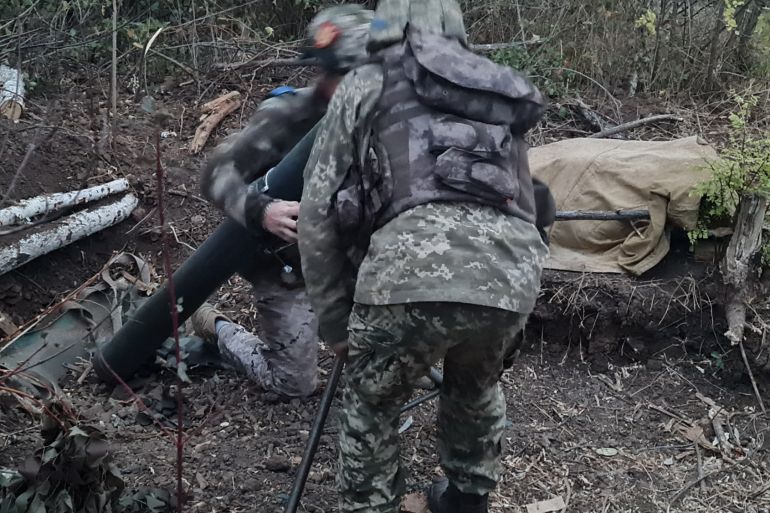Dispatches from Ukraine’s front lines: A predawn assault
From a subterranean town to a brigade on the southern front, an inside look at life on four front lines over four days.

Sunday, October 8
Al Jazeera’s Alex Gatopoulos travelled to four front-line locations in October. This is the last of a mini-series of dispatches from that trip. Read his previous dispatches about life in a subterranean front-line town, the village that lost one-sixth of its population after a Russian air strike and a brigade on the southern front.
At 2:45am, we head to the rendezvous point where Stepan, our military liaison officer, will meet us. We will be taken to a mortar position before heading to the start line of an assault, a couple of kilometres away.
Keep reading
list of 4 itemsRussian strikes kill two in Ukraine’s Kharkiv as Moscow steps up attacks
Fico shooting reveals a deeply divided country in the heart of Europe
Russia’s Putin eyes greater support from China for Ukraine war effort
The checkpoints are more suspicious of us as we are the only ones travelling in the dark. We are pulled over by the police and the driver, Denis, and the fixer, Dimi, are questioned. Our embed is with the military and in general the two organisations don’t get on. Much discussion, checking of papers and phone calls ensue. The police are angry they weren’t informed and make us wait, saying the army has no authority here.
Finally cleared to pass, we arrive at the rendezvous location, don our body armour and tramp off in the dark. Luke, our security consultant, tells us to stay in a straight line – no deviation due to mines. The path has been marked by shreds of white plastic tied to trees. Once at the mortar position, we will remain there for 20 minutes before moving again. Maybe. Things have a habit of changing quickly. I could really do with a coffee.
Al Jazeera correspondent Zein watches videos of his little girl while we wait to move forward. We are all quiet. We drive in the dark for a while, pale predawn light on the horizon. This is the road that leads directly to Robotyne, only recently back in Ukrainian hands. The bark of artillery is more insistent now, accompanied by heavy mortars. It starts to get light.
The distant booming echoes of the artillery sound like giants slamming doors – the vast scale of it doesn’t feel human.
A quick interview with the commander is punctuated by nearby blasts and warnings that Russian jets are dropping KAB 250 and 500s, precision-guided bombs.
We’ve filmed enough, no need to stay any longer. We head back. The car speeds up to avoid the attention of Russian spotter drones.
We pull back to Orikhiv where we were a few days ago. Driving back through the wrecked town, we pass armoured personnel carriers crammed with soldiers on the roof. More military vehicles are gathered under trees, hiding from the spotters. The sky grows grey and it starts to rain.
Orikhiv now behind us, we start to slow down. The houses are intact, normal programming has resumed and off comes the body armour. Our clothes, soaked with sweat, suddenly feel cold. We think about breakfast and coffee. It starts to rain heavily.
We pull over and chat but receive a call with an offer to meet some of the medics who have been pulling shifts at the local first aid station. The body armour goes back on with minor grumbling.
We climb into yet another vehicle. At the aid station, we speak to medics – all are exhausted, some are asleep in their bunks, others offer us chairs in the cramped bunker. Our selfish thoughts of food are forgotten as they share what they’ve seen, what they’ve witnessed, what they could and could not do, who they could and could not save. All spoken matter of factly, no emotions involved. That will come later.